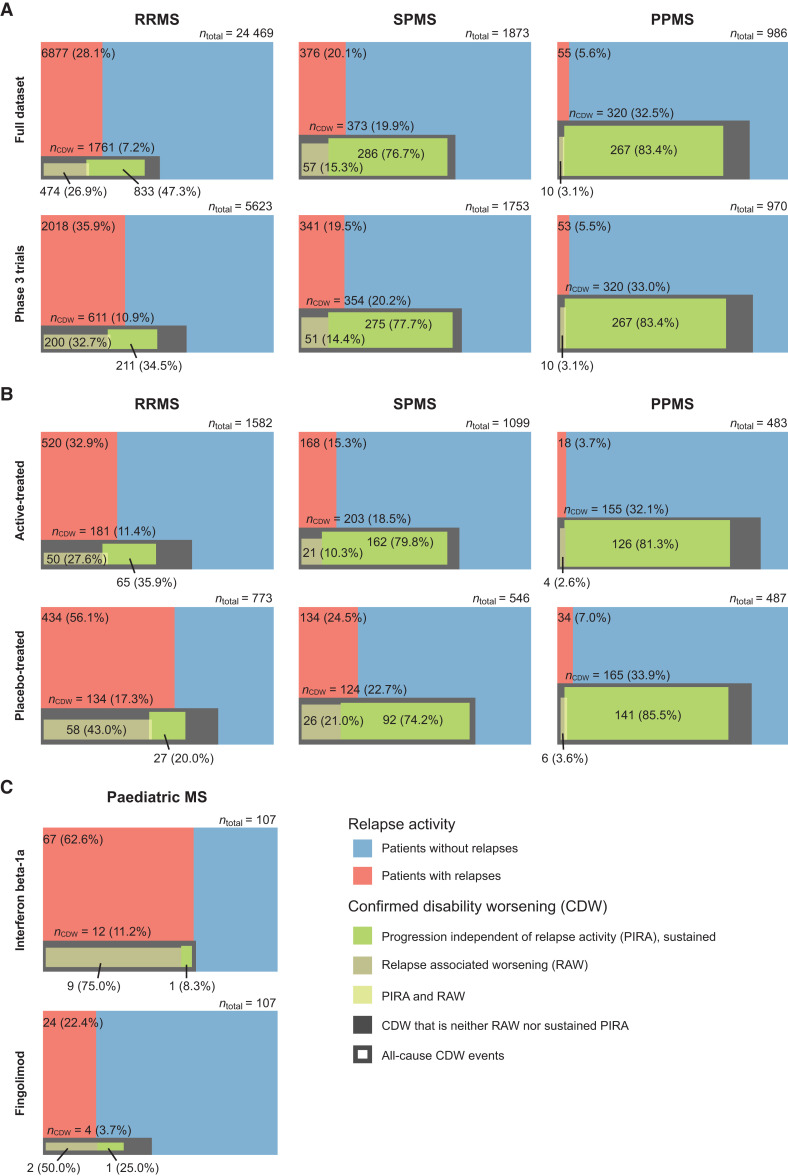Figure 2.
Confirmed disability worsening by mechanism across multiple sclerosis phenotypes. Euler diagrams are presented by multiple sclerosis phenotype for (A) the full dataset (n = 27 328) and in patients from randomized phase 3 trials plus extensions (n = 8346); (B) active-treated versus placebo-treated patients from phase 3 placebo-controlled trials (n = 4970); and (C) in paediatric patients treated with fingolimod or interferon beta-1a. In the full dataset and for the subset of patients from phase 3 clinical trials, progression and relapse onset was restricted to the first 2 years of the trials. Six-month CDW was used in adult patients. Three-month CDW was used in paediatric patients, as the mean study duration was 20 versus 17 months for patients treated with fingolimod or interferon beta-1a, respectively. PIRA events were 6-month or 3-month confirmed and sustained until the end of the follow-up time in adult and paediatric patients, respectively. Coloured areas are proportional to the represented groups. Each diagram is divided vertically into a red area (patients who relapsed) and a blue area (patients who did not relapse); this vertical division extends to the bottom of the figure. Superimposed is the proportion of patients who experienced a 6-month CDW or 3-month CDW (dark grey box); the overlap between the grey box and red area represents patients who relapsed and had all-cause disability worsening; the overlap between the grey box and the blue area represents patients who had all-cause disability worsening but no relapses. Patients with CDW events were further classified into RAW (bronze), PIRA sustained until the end of the follow-up period (green) or both (yellow). Due to the definition of RAW and PIRA events (Supplementary Table 2B), some patients experienced a disability worsening that could be classified neither as a RAW nor a sustained PIRA event (dark grey)—these unclassified events also include 6-month confirmed PIRA events that were not sustained in the longitudinal data. The baseline characteristics of patients who are diagnosed as RRMS but experienced PIRA events without having any relapses in the study are summarized in Supplementary Table 4 and an assessment of the MRI activity is provided in Supplementary Table 5.

